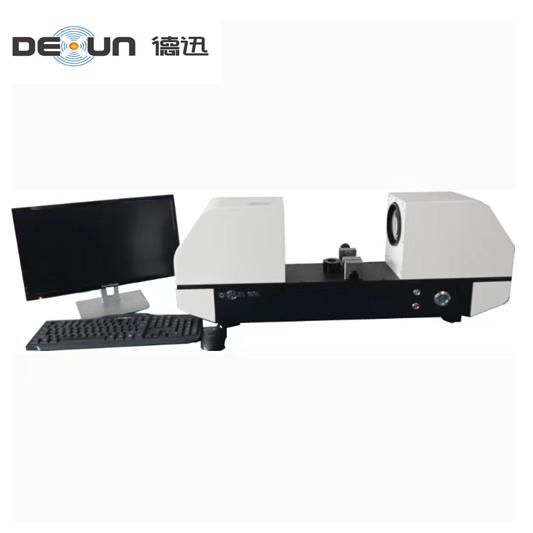To successfully establish a Red Nanguo pear orchard, start by preparing the site. Choose high-quality, vigorous seedlings and plant them with a spacing of 3 meters by 5 meters. Before planting, dig holes measuring 1 meter in depth and 0.8 meters in diameter. Mix two parts of subsoil with one part of 15 kg of well-rotted farmyard manure. When backfilling, first place a 20 cm layer of straw at the bottom, then fill with topsoil, followed by the manure-subsoil mix in the middle, and finally cover with another layer of topsoil. Ensure that the root collar is slightly above ground level after planting. Once the tree is planted, water it thoroughly, allow the soil to dry slightly, then cover the base with mulch and wrap the trunk to protect against pests and encourage lateral bud development, which helps increase survival rates.
When the leaves begin to develop, remove the protective bags. Regularly weed and monitor for pests and diseases during the summer months. Red Nanguo pears are not self-fertile, so it's important to plant pollination trees in a ratio of 1:3 to 1:5. Select varieties such as Gold-Selective Perfume, Apple Pears, or Red Gold Autumn, which have strong cold resistance, good pollen compatibility, and similar blooming periods.
For new trees, ensure consistent moisture supply. Once new shoots reach 5–10 cm in length, apply a mound around the base and install a 0.8-meter-diameter watering tray to help with drought resistance. Red Nanguo pears rarely produce more than one flush of growth, and new shoots typically stop growing in mid to late June. Before this, apply nitrogen fertilizer 2–3 times to support healthy development. Control weeds and manage unwanted sprouting effectively.
Fertilization and irrigation are key components of orchard management. Each year from August to September, apply high-quality organic fertilizer by deep tilling the soil. Aim for a balanced nutrient application, and top-dress with a nitrogen-phosphorus-potassium compound fertilizer during critical growth stages. In the early season, focus on nitrogen and phosphorus, while later stages should emphasize phosphorus and potassium. For every 100 kg of fruit produced, apply approximately 0.6–0.7 kg of pure nitrogen, 0.3–0.35 kg of phosphorus, and 0.3–0.35 kg of potassium. Additionally, apply 15–20 kg of superphosphate and 3–5 kg each of ferrous sulfate and zinc sulfate per acre to prevent nutrient deficiencies.
Combine fertilization with pest control by spraying 1000-fold diluted amino acid liquid fertilizer or 0.3% potassium dihydrogen phosphate before, during, and after fruit expansion to enhance tree health and improve fruit quality. Water regularly after each fertilization, especially before and after flowering and during fruit expansion. Drain excess water during the rainy season and limit irrigation in the fall to avoid overwatering.
Pruning is essential for shaping the tree into a spindle form. The central trunk should be 80–100 cm tall, with 10–15 main branches evenly spaced around it. Each main branch should spread out at an angle of 70–90 degrees and be shorter than half the row spacing to prevent overcrowding. Resulting branches grow directly from the main branches. After planting, cut the seedling at 80–100 cm height and leave 3–4 full shoots below the cut. In the first 1–3 years, shorten the central stem by 40–50 cm annually. The tree structure is usually complete within 4–5 years. Adjust the central stem as needed, and when the desired number of main branches is achieved, lower the canopy to maintain a height of about 3 meters.
Pruning during the growing season includes techniques like bud carving, branch pulling, cap trimming, girdling, and removing suckers. These methods promote lateral branching, reduce vegetative growth, and encourage flower bud formation, which benefits fruit quality. Carving buds on young trees (1–4 years old) helps stimulate branching and select main branches. Pulling branches allows you to thin dense growth and control upward growth. Cap trimming during mid to late July helps control leggy growth and promotes flower bud formation. Girdling, done between May 25 and June 10, involves cutting the trunk or main branches to restrict sap flow, encouraging fruiting. Finally, removing unwanted shoots and managing lateral growth ensures proper tree balance and vigor.
One-click Video Measuring Machine- Horizontal
One-click Video Measuring Machine (horizontal) :
â‘ Fast: multiple products can be measured at the same time. After the products are placed, the dimensions of multiple products placed on the platform can be measured with only one key, which subverts the traditional measurement mode.
No human error: anyone's measurement results are the same.
â‘¢ Simple: anyone can easily and quickly operate.
(4) Random: products can be placed at will, without any fixture.
⑤ The data report can be automatically exported after the measurement.
The appearance of the integrated design, generous, beautiful. The fuselage main frame adopts the combination of high standard aviation aluminum and granite to ensure the stability of the equipment.
⑦ Powerful software processing system and accurate algorithm, to obtain high precision measurement results.

One-click Video Measuring Machine- Horizontal ,One Button Fast Measuring Instrument Horizontal Type,High Precision Fast Detector ,Fast Detector ,Fast Splicing Detector
Zhejiang dexun instrument technology co., ltd , https://www.dexunmeasuring.com
